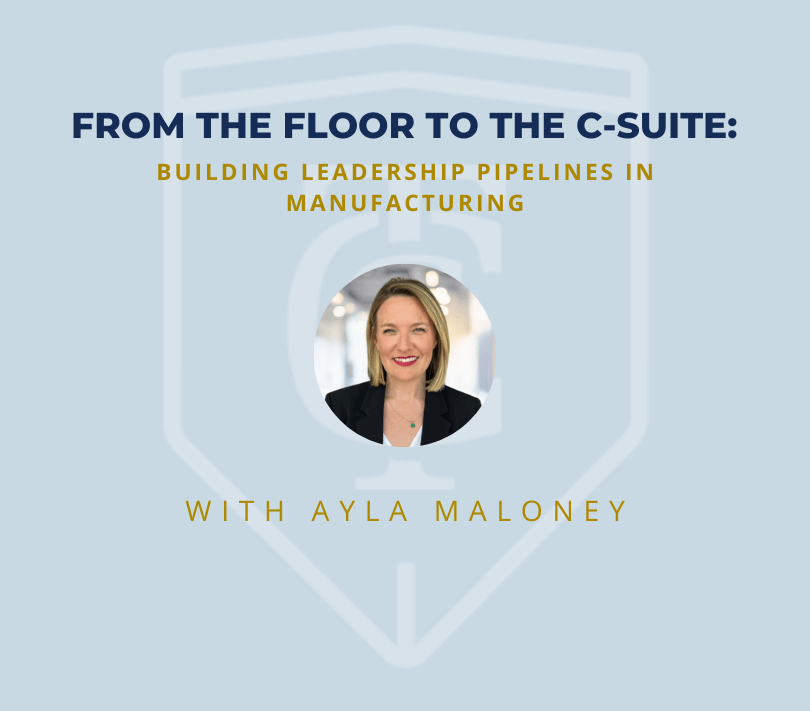
The manufacturing industry is evolving fast—but many leadership pipelines aren’t keeping up.
With new technologies, shifting workforce demographics, and tighter labor markets, the pressure is on to develop operational leaders who understand both the complexity of the plant floor and the strategy behind business growth.
What’s missing? Intentionality.
Manufacturers who want long-term success must start investing in leadership pipelines that elevate talent from the shop floor to the C-suite. Because the next generation of great leaders? They’re likely already inside the building.
The Unique Leadership Challenge in Manufacturing
The challenge is clear: legacy leadership is aging out, and ready-now successors are in short supply.
Many manufacturers overlook high-potential talent already in their operations—especially hourly and front-line employees—while relying too heavily on external hires who may struggle to align with company culture.
Even when promotions do happen, a gap often exists between operational excellence and executive readiness. It’s not enough to know the work, you have to understand the business behind the work.
Why Leadership Pipelines Must Start on the Floor
The plant floor holds a wealth of untapped leadership potential.
Employees who’ve grown through the ranks bring deep understanding of systems, safety, culture, and workflow. When these individuals are given pathways to grow, they earn credibility quickly and inspire loyalty among their teams.
Investing in internal leadership development also helps preserve institutional knowledge and ensures smoother transitions during change.
The bottom line? If your leadership strategy starts at mid-management, you’re already too late.
Building an Effective Manufacturing Leadership Pipeline
- Identify Front-Line Talent with Leadership Potential: Use more than just performance metrics. Combine supervisor insight, peer feedback, and indicators of cultural alignment to spot emerging leaders early.
- Provide Cross-Functional Exposure: Operational leaders need to understand how the whole business works. Offer stretch assignments, rotational programs, and cross-departmental projects to build a broader view.
- Invest in Scalable Leadership Development: Your training approach should evolve across tiers—from the shop floor to mid-management and executive levels. Combine technical development with coaching, mentorship, and clear succession planning.
- Bridge the Gap Between Operations and Strategy: Expose rising leaders to P&Ls, planning cycles, and executive decision-making. Help them connect day-to-day operations with larger business outcomes.
Leadership development isn’t just a retention tool, it’s a long-term succession strategy.
When to Look Outside: The Case for Executive Search
Even with strong internal development, there are times when the right leadership doesn’t exist in-house. That’s where a trusted executive search partner becomes critical.
The best external candidates often come from parallel environments or competitor networks—people who understand plant operations, but can also move the business forward strategically. A hybrid approach—combining internal pipeline development with strategic external search—offers both continuity and fresh perspective.
Manufacturers that build leadership pipelines from within are better positioned to navigate market shifts, retain high performers, and protect company culture. The talent is already on the floor. It just needs direction, investment, and opportunity.
At The Christopher Group, we specialize in building and strengthening leadership pipelines in mid-market manufacturing. If you’re ready to create a talent strategy that drives long-term success—from the floor to the C-suite—we’re here to help.
 Ayla, Managing Partner and Chief People Officer, is passionate about genuinely connecting with and guiding professionals to career and life-enhancing opportunities. She has been with The Christopher Group for over nine progressive years and sits on the firm’s Leadership Team. To learn more about Ayla visit her bio page.
Ayla, Managing Partner and Chief People Officer, is passionate about genuinely connecting with and guiding professionals to career and life-enhancing opportunities. She has been with The Christopher Group for over nine progressive years and sits on the firm’s Leadership Team. To learn more about Ayla visit her bio page.

